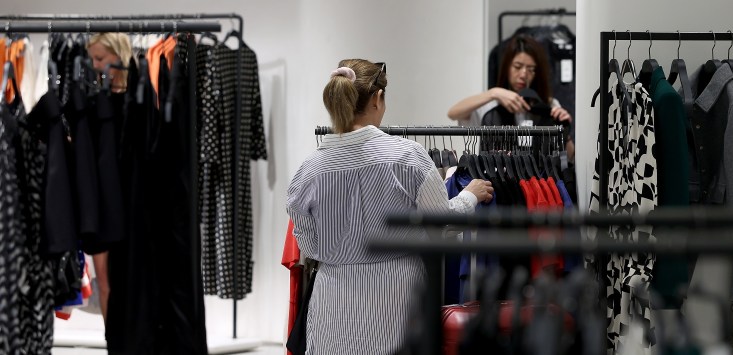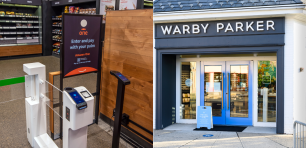
Source: AAP Image/Jane Dempster
Shoppers likely took advantage of Black Friday sales and spent less leading up to Christmas, with economists pencilling in a more subdued finish to 2023 for retailers.
The month of December is shaping up to be a softer month for official retail sales numbers after consumers jumped on discounted goods in November and budgets were dried up by high living costs.
The last dataset from the Australian Bureau of Statistics (ABS) recorded a 2% boost in November, up from a 0.4% fall in October, suggesting shoppers hung back for items to go on sale.
Commonwealth Bank economists are tipping a substantial 4% contraction in retail trade over the month after the bank’s own internal household spending indicator recorded a sharp 3.9% fall.
“Such an outcome in December would imply only a small increase in retail volumes over the quarter and a softening since the September quarter,” CBA economist Stephen Wu wrote in a note.
Westpac economists have pencilled in a more moderate 0.5% decline over December, though said the risks were tilted towards a larger fall.
The high cost of living has kept a lid on consumer spending, with Deloitte Access Economics estimating a 9% peak-to-trough decline in household disposal incomes when controlled for inflation, population growth, taxes and mortgage payments.
“It’s a mouthful, but real household disposable income per capita is one way of measuring how the economy ‘feels’ to everyday Australians,” Deloitte Access Economics partner Stephen Smith said.
Smith said it was no surprise that real household disposable income per capita declined so sharply after pandemic-era support payments dried up and migration picked up as borders reopened.
“In fact, real household disposable income per capita is expected to remain below the trend seen between the 2008 financial crisis and the pandemic for at least the next five years,” he wrote in a report about the outlook for business.
“That means economic conditions will keep feeling pretty tough for a while yet.”
With the pandemic now firmly in the rear mirror, the economic challenge for the country would go back to lifting the rate of growth rather than wrangling inflation by the year’s end.
The group is forecasting a modest 1.6% growth through 2024-25, picking up to 2.1% in 2025-26.
“While the spending of migrants and older Australians who have avoided mortgage rate pain is helping to stave off recession, the outlook for growth in the Australian economy is modest at best,” Smith said in his analysis.
This article was first published by AAP.
Handpicked for you

Futurist in the USA: From palm scanners to phygital spaces



COMMENTS
SmartCompany is committed to hosting lively discussions. Help us keep the conversation useful, interesting and welcoming. We aim to publish comments quickly in the interest of promoting robust conversation, but we’re a small team and we deploy filters to protect against legal risk. Occasionally your comment may be held up while it is being reviewed, but we’re working as fast as we can to keep the conversation rolling.
The SmartCompany comment section is members-only content. Please subscribe to leave a comment.
The SmartCompany comment section is members-only content. Please login to leave a comment.